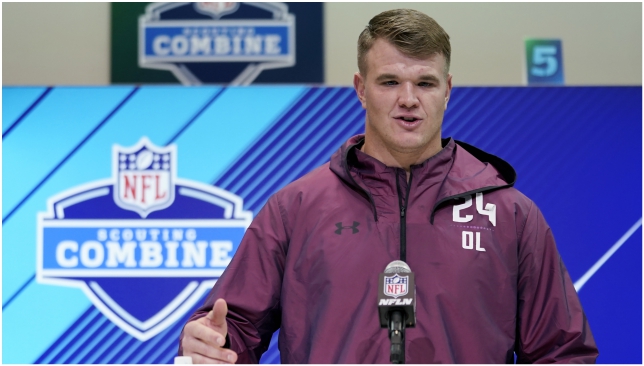
It’s that time of the year again in the NFL, when we froth at the mouth over the NFL combine and pick apart prospects based on measurements and bench press reps.
The week-long combine in Indianapolis allows all 32 teams in the league to evaluate and scout the pool of players that will be available in the draft, which takes place from April 26-28.
Everything in the NFL calendar seems to be its own ‘event’, but that’s especially true of the combine, which has, over the years, become a spectacle separate from the draft.
And there are so many elements to the combine that it’s easy to shoot down or raise a prospect’s stock based off a limited showing.
Here’s what you need to know about the combine and how useful it is for evaluating players.
Mental grind
Don’t be fooled by all the workouts and individual drills the prospects have to go through. At the end of the day, teams use the combine to gauge the mental strength of players as much as they use it to see how fast they can run or how high they can jump, if not more.
So while an outstanding 40-yard dash time could put a prospect on a team’s radar, so could an impressive interview.
Something like the Wonderlic – a 12-minute, 15-question test designed to measure how quickly someone can process information more than intelligence – doesn’t hold much that much value, but an interview could potentially make or break a player’s standing with a team.
It may sound like a cliché, but teams want to see how well players can deal with adversity. That’s why they throw them all these off-the-wall, non-football related questions, which are supposed to put prospects under pressure and reveal a little bit of their character.
When a scout asked me at the combine if I had to murder someone: Would I use a gun or a knife? pic.twitter.com/R5BHMxiDM7
— Austen Lane (@A_Train_92) February 23, 2016
There are also plenty of football-specific questions tossed at players, related to drawing up plays or what to do in certain situations, but again, the mental aspect of the combine isn’t a way to shine a light on who’s smart and who’s not – it’s meant to show how prospects’ minds work.
And while character and mental fortitude may not seem as crucial as how accurate you can throw a football, they matter to some extent to the people ultimately making the decisions in the draft.
Drill down
When it comes to the hands-on activities at the combine, not every drill or workout is created the same.
While each drill measures some physical aspect, some are more valuable than others when it comes to practical application on the field on Sundays.
Take, for example, the bench press, which is mesmerising to watch with some of the best athletes in the country pumping 225 pounds as many times as they can. But there’s little value in that from a functionality standpoint, considering the NFL is so much about having a low centre of gravity. Plus the longer your arms are – and some of these prospects have incredible limbs – the more energy you have to exert on a single rep.
Two drills that are as eye-catching as the bench press, while being sizably more useful, are the vertical jump and 40-yard dash.
This isn’t the NBA, but if you’ve been watching how football is played these days, you’ve noticed it features elements of basketball. One of those areas is having a wide receiver or tight end who can simply out-jump a defensive back.
Some of the biggest plays over the course of an NFL season involve players fighting in the air for a ball that’s thrown up for grabs. So if you can jump higher than the next guy, that’s definitely an advantage.
The 40-yard dash, meanwhile, has become the main attraction at the combine. There’s just something cool about being the fastest guy on the field, even more so than being the strongest.
And as the saying goes, speed kills, which is why evaluators are so often hypnotised by 40 times and that alone can push players up the draft board.
As sexy as it is, however, the 40-yard dash – and pretty much all other drills at the combine – pale in comparison to the three-cone drill.
For those in the know, the three-cone drill is in many ways the holy grail of evaluating the athleticism of skill players like running backs, edge rushers and defensive backs.
The reason for that is it measures the ability to change direction, cut and quickly accelerate – all vital in practically any situation on Sunday. If a prospect performs well in this, it’s a strong indication that they’ll be coveted in the draft and have some sort of success in the league.
With all that said, there’s nothing at the combine – mental or physical – that offers a clear cut indication that a player can’t make it at the next level.
That’s why it’s important to keep in mind that no one knows anything (for certain) and for all the evaluation tools teams use, it’s impossible to predict a prospect’s future in the league.